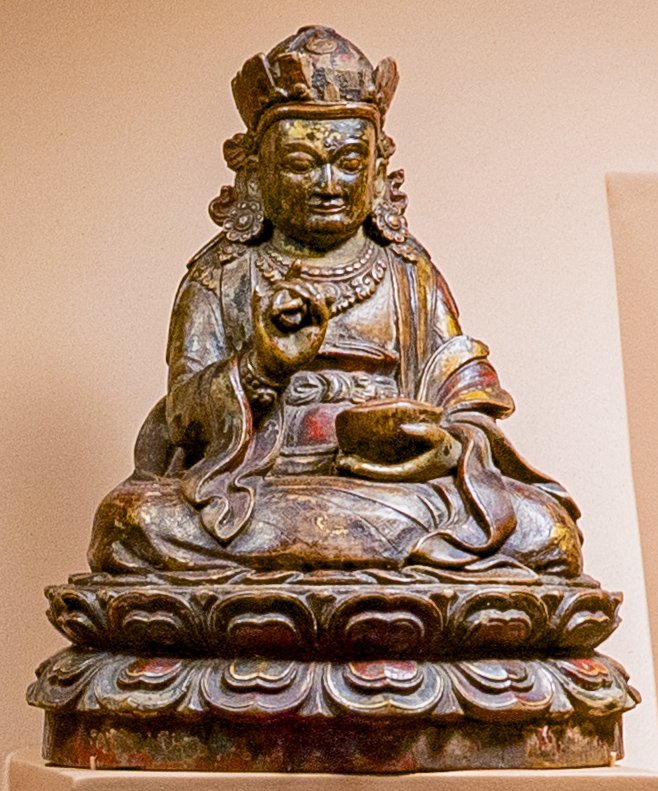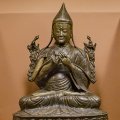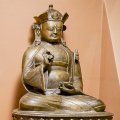Patan Museum (Nepal): photo 126
Photo 126 of 212 in Gallery: Patan Museum (Nepal)

Image title: Padmasambhava (Tibet, 16th century)
Description of the photo
This Wooden sculpture shows an image of Padmasambhava, from the 16th century origination from Nepal.—Materials used: Wood, paint.
Notes: Lamas are depicted wearing monastic robes and sometimes the special hat of their order. They often display attributes and hand poses associated with the particular Buddhist deities they are believed to incarnate.
Revered Historical Persons—Portrait-like images abound in Tibetan Buddhism. These symbolize important personages, including the founders of sects, famous lamas (monks, literally “superiors”), teachers and renowned Tantric adepts (mahasiddhas). Few are real portraits. Padmasambhava (4,5) [see next image also], the 8th century Indian Tantric master who brought Buddhism to Tibet, was considered to be one of the 84 “Great Perfected Ones” venerated for their great knowledge and magic powers. He is always represented seated, wearing monks' robes and a hat typical of those worn in his homeland, the Swat Valley of Pakistan, once a Buddhist stronghold. He carries a magic wand (khatvanga) over his left shoulder. The smaller Padmasambhava is an especially fine sculpture in wood.
Gallery information:
The Patan Museum is located on the Durbar square of Patan (Lalitpur/Lalitapura, Kathmandu, Nepal) which is associated Keshav Narayan Chowk (Keshavnarayan)—a form of Lord Vishnu. Being listed as a World Heritage Site, the whole of Durbar square is filled with exquisite temples, sculptures and other ancient structures, of which the ancient history history can be traced to the Malla Kings of Lalitpur. It is an important site for both Buddhism and Hinduism.
Photo details:
Date: 2019-12-02
Camera: SONY ILCE-6400
Exposure: 1/25
Aperture: f/4.5
ISO: 100
Focal length: 18mm
High resolution:
Download file
Size: 379.72 KB
Resolution: 658 x 791
© Photograph by Gabe Hiemstra.
License: CC BY-NC-ND 4.0

